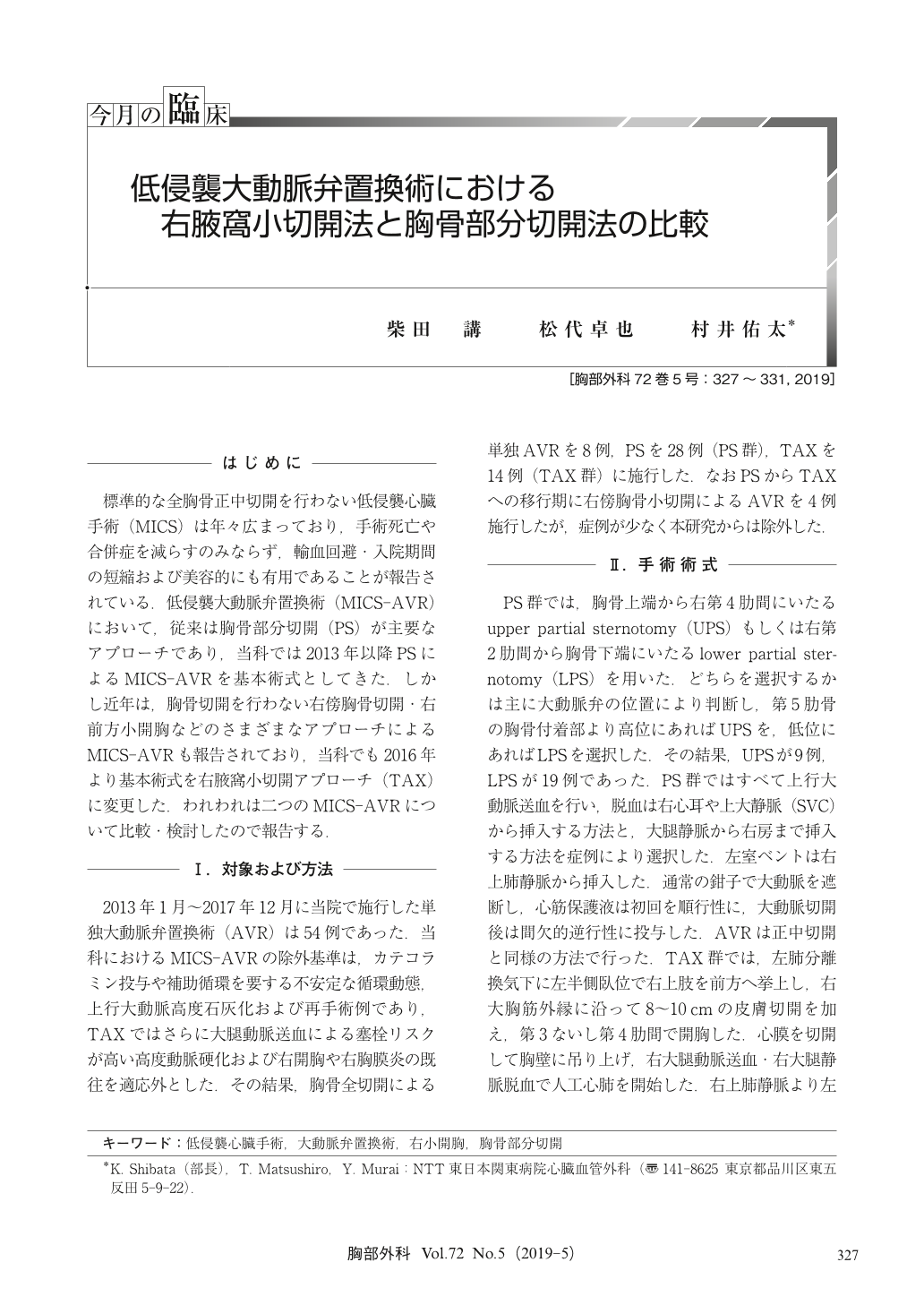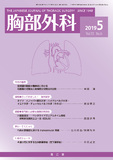Japanese
English
- 有料閲覧
- Abstract 文献概要
- 1ページ目 Look Inside
- 参考文献 Reference
- サイト内被引用 Cited by
標準的な全胸骨正中切開を行わない低侵襲心臓手術(MICS)は年々広まっており,手術死亡や合併症を減らすのみならず,輸血回避・入院期間の短縮および美容的にも有用であることが報告されている.低侵襲大動脈弁置換術(MICS-AVR)において,従来は胸骨部分切開(PS)が主要なアプローチであり,当科では2013年以降PSによるMICS-AVRを基本術式としてきた.しかし近年は,胸骨切開を行わない右傍胸骨切開・右前方小開胸などのさまざまなアプローチによるMICS-AVRも報告されており,当科でも2016年より基本術式を右腋窩小切開アプローチ(TAX)に変更した.われわれは二つのMICS-AVRについて比較・検討したので報告する.
Objectives:Minimally invasive aortic valve replacement (AVR) is reported to show better postoperative outcomes than those associated with conventional AVR. We compared 2 minimally invasive approaches;right infra-axillary thoracotomy (TAX) and partial sternotomy (PS).
Methods:From January 2013 to December 2017, 54 patients underwent isolated AVR, of whom 14 were in TAX group and 28 were in PS group. Operative outcomes were compared between the 2 groups.
Results:Preoperative characteristics were similar between the groups. Cardiopulmonary bypass time and cross-clamp time were significantly longer in TAX group. Blood transfusion rates, however, were lower [5 (35.7%) versus 22 (78.6%):p=0.006] and ventilation time was shorter (median 4.0 versus 6.0 hours:p<0.001) in the TAX group. No mortality or stroke occurred in either group.
Conclusions:Both TAX and PS AVR could be performed safely, with low mortality and morbidity. TAX was associated with a lower transfusion rate and a shorter ventilation time, and was supposed to be less invasive than PS.

© Nankodo Co., Ltd., 2018


